







By Lindsay Huth
We’re losing ground in the Chesapeake Bay.
Sea levels in the Chesapeake have risen about a foot in the last century, at a yearly rate more than twice the global average. In Maryland and Virginia, that water isn’t just encroaching on coastline; it’s swallowing islands whole.
The natural erosion that the area experiences began accelerating in the 1850s — the same time the Industrial Revolution massively increased our output of carbon dioxide and other greenhouse gases, said Kristin Reilly, communications director for the National Wildlife Federation.
Since then, upward of 500 islands have sunk beneath the waters of the bay. Some are only specks on old maps or notes in early documents dating to the English settlers, and with a spotty historical record, it’s hard to know just how many we’ve lost, Reilly said.
But using historical shoreline surveys collected by the Maryland Geological Survey, we can identify and track the disappearance of a handful of those islands off Maryland’s coast.
Ten Maryland islands we've lost
A sample of the hundreds of islands that have sunk into the Chesapeake Bay

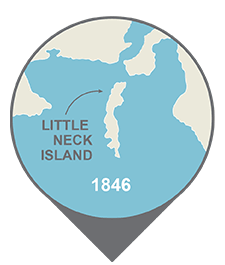

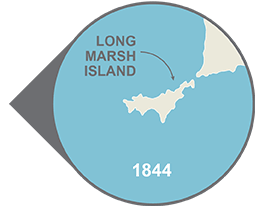



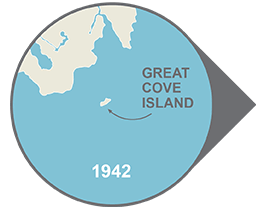
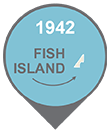
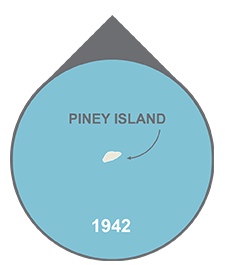
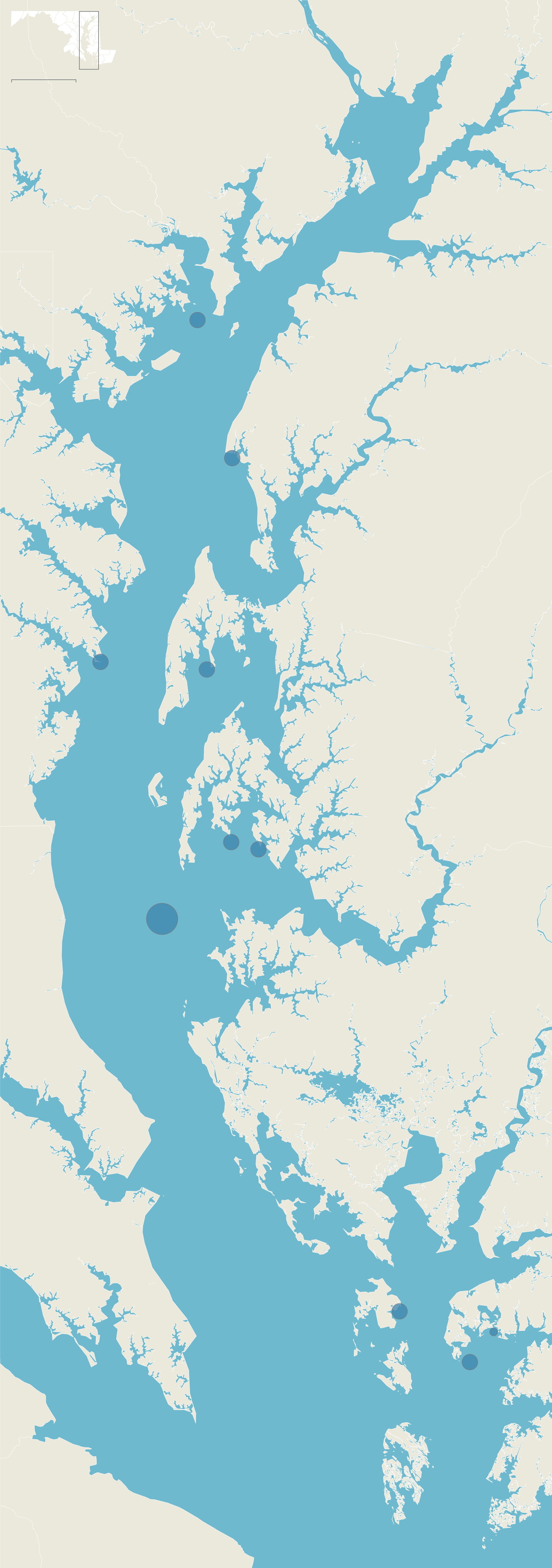
Cecil Co.
5 miles
Harford Co.
Chesapeake Bay
Baltimore Co.
Kent Co.
Chesapeake Bay
Queen Anne’s Co.
Talbot Co.
Chesapeake Bay
Dorchester Co.
Chesapeake Bay
VIRGINIA










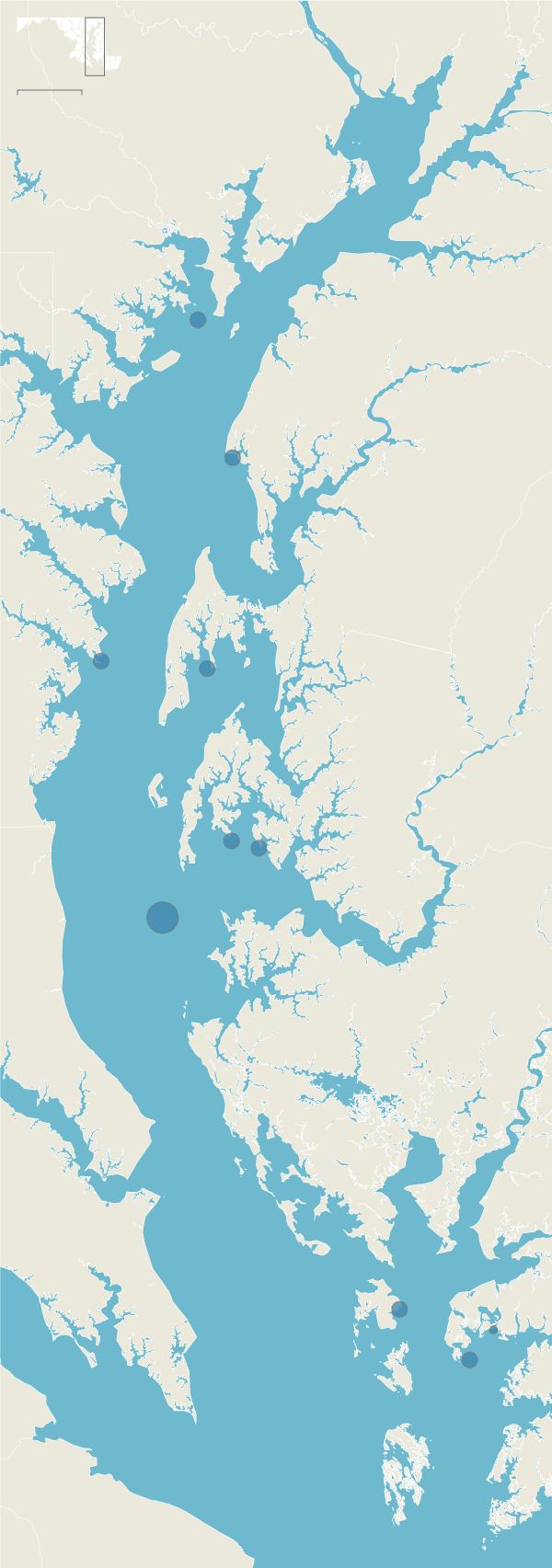
Cecil Co.
5 miles
Harford Co.
Chesapeake Bay
Baltimore Co.
Kent Co.
Queen Anne’s Co.
Talbot Co.
Chesapeake Bay
Dorchester Co.
Chesapeake Bay
VIRGINIA










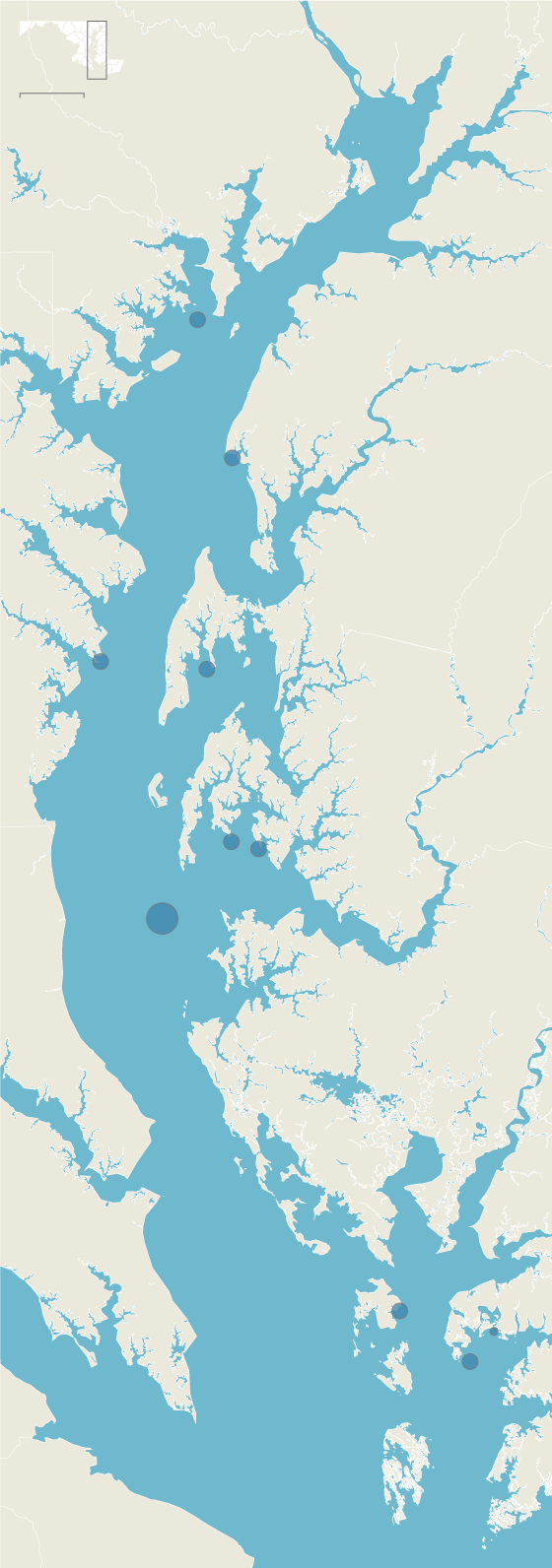
Cecil Co.
5 miles
Harford Co.
Chesapeake Bay
Baltimore Co.
Kent Co.
Queen Anne’s Co.
Talbot Co.
Dorchester Co.
Chesapeake Bay
VIRGINIA
Historical shoreline surveys from the Maryland Geological Survey. Older shoreline estimates may be less accurate. State outlines from the Maryland GIS Data Catalog and the U.S. Census Bureau.
In the late 1800s, Sharps Island hosted farms and a three-story hotel, complete with a boardwalk and steamboat pier, according to William Cronin's 2005 book "The Disappearing Islands of the Chesapeake." But with erosion rapidly shrinking the island, the pier closed by 1900, and the hotel shuttered soon after.
The island was eventually abandoned, and the land sunk out of view in 1963.
Those islands that have survived are shrinking rapidly. The Tangier Islands — the last inhabited Chesapeake islands off the Virginia coast, according to Nature — have lost two-thirds of their land mass since 1850.
They were still home to more than 700 people as of 2013, but a study in Nature estimates the remaining population will have to evacuate within 50 years. Within the next century, the land will be mostly gone.
The Chesapeake Bay is particularly vulnerable to rising sea levels. In addition to the melting glaciers that are causing seas worldwide to rise, the land beneath the bay is gradually sinking, a long-term effect of geological shifts in the area. The sea is rising faster in the Chesapeake than any area on North America’s Atlantic coast.
The state of Maryland’s most recent report projects the sea level could rise up to 2.1 feet by 2050. A 3.7-foot rise by the end of the century is reasonable, though the water could climb as high as 5.7 feet, according to the report.
As seas rise, more islands will sink
Rising seas will encroach on shorelines and swallow islands
Current sea level
Current sea level
Current sea level
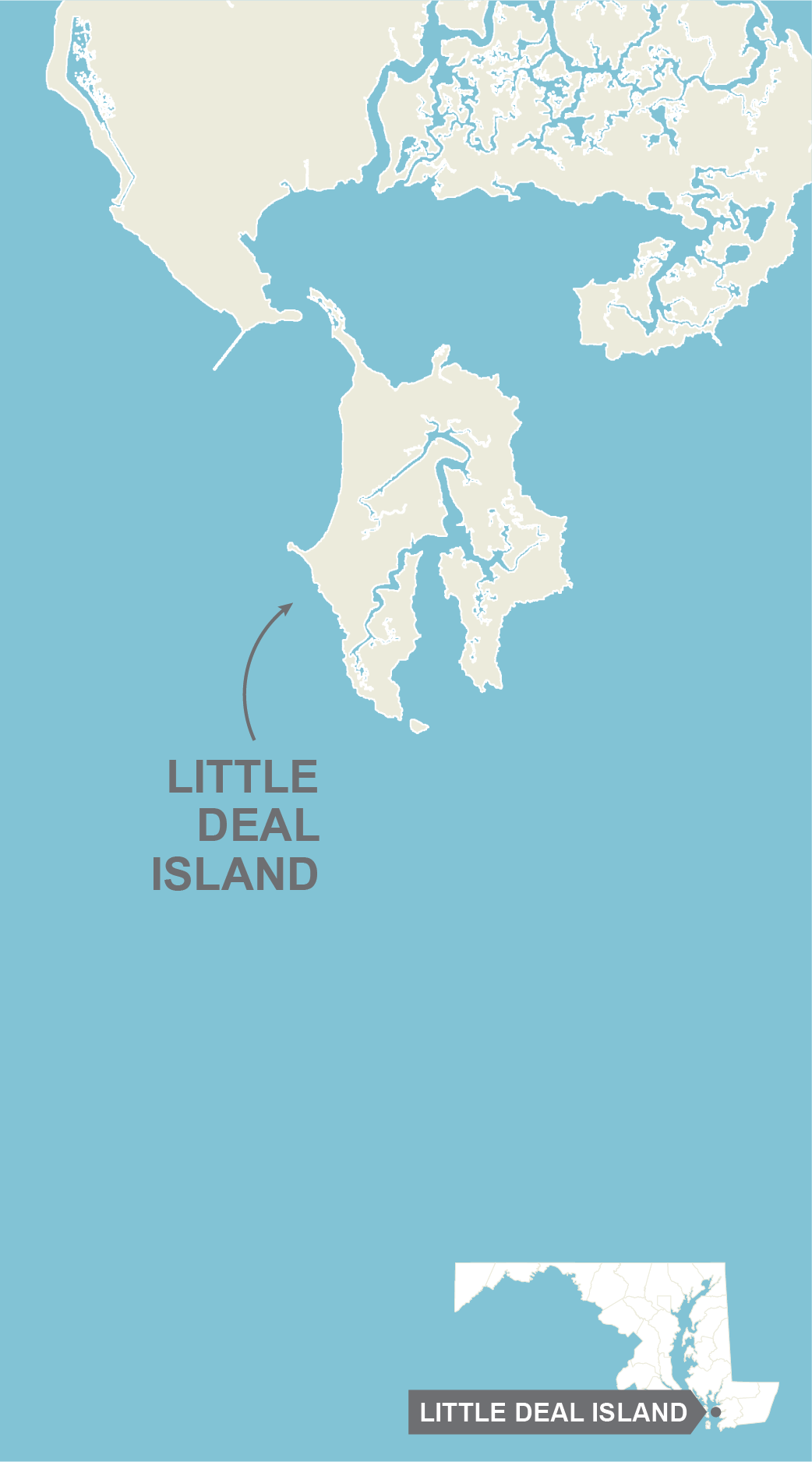
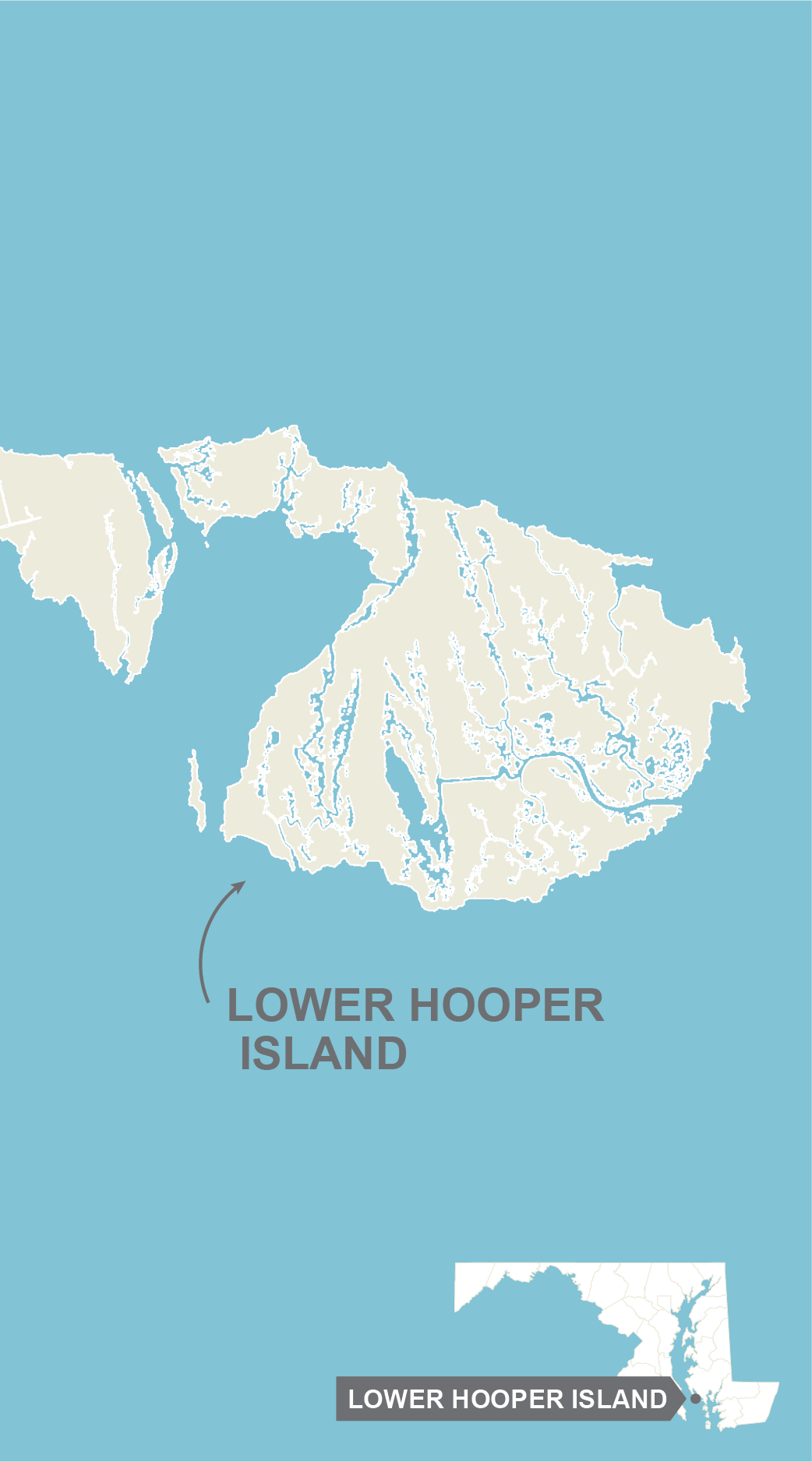

Shoreline sea rise projections from the NOAA Office of Coastal Management. Approximate years for sea level rise provided by the Maryland Commission on Climate Change Science and Technical Working Group.
Most of the Chesapeake’s islands sit at or close to sea level, and the smallest islands — those measuring less than 1,000 acres — are the most susceptible to shrinking.
Estimates of sea-level rise from the National Oceanic and Atmospheric Administration place the most immediate and drastic effects in southern Maryland, along the coasts and on the islands off of Dorchester, Wicomico and Somerset counties, where the land is particularly low.
But those sinking islands play a role in the bay’s coastal ecosystem, which provides habitats for wildlife like fish, crabs and migrating birds, said Ariana Sutton-Grier, an ecologist at the University of Maryland. Some Chesapeake islands are free of predators, too, so the refuge they offer is particularly important for nesting birds, said Keryn Gedan, a biology professor at George Washington University.
The coastal lands also help filter the bay’s water and protect inland areas from severe flooding, Sutton-Grier said.
Some islands are being restored. The U.S. Army Corps of Engineers and the state of Maryland are rebuilding Poplar Island, a sinking plot of land off Talbot County, out of dredged material from area shipping channels. The project — a 1.4-billion dollar undertaking — will reconstruct habitats for local wildlife, like diamondback terrapins, rockfish and a variety of birds.
But most islands aren’t so lucky.
“[The islands] provide many benefits to people,” Sutton-Grier said in an email. “As a result, their loss means we are losing all of those important wetland benefits.”